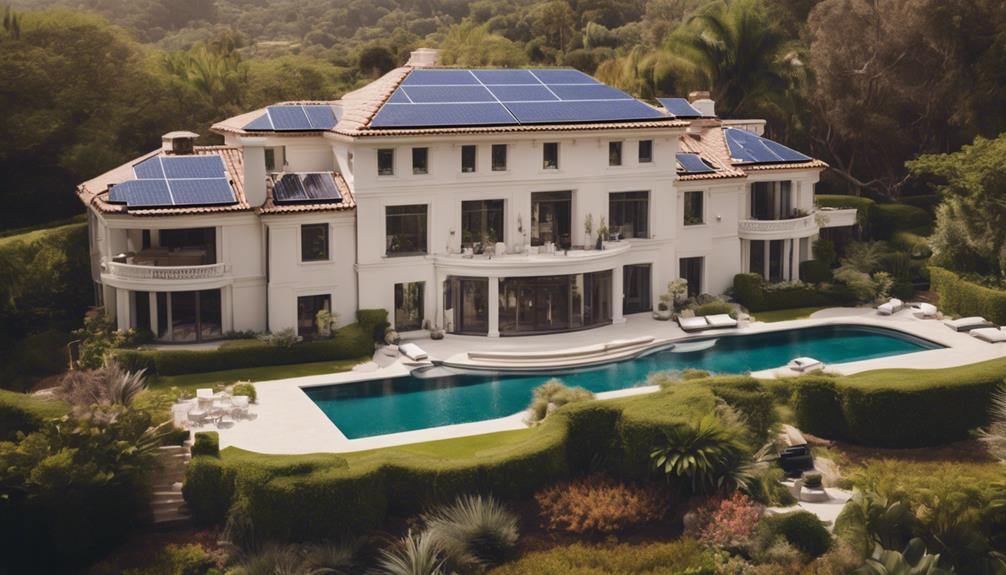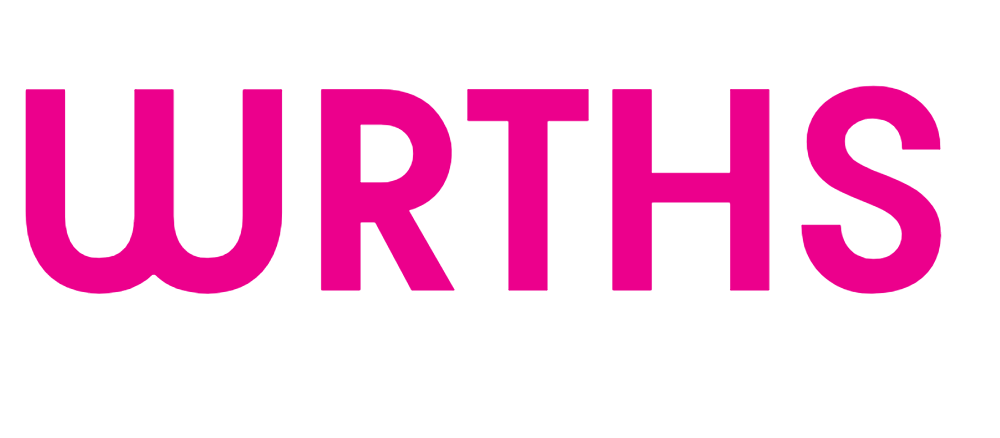Celebrity real estate investments have surged in popularity, with A-listers like Leonardo DiCaprio and Ellen DeGeneres leading the charge. DiCaprio's diverse portfolio includes homes in California, New York, and even an island in Belize for an eco-resort project. DeGeneres stands out for flipping over 20 luxury properties since 2003, showcasing her astute business acumen in the property market. These stars, along with Oprah Winfrey, Madonna, and others, invest globally in properties ranging from historic buildings to multimillion-dollar mansions, highlighting lucrative and diverse approaches to real estate. Their success hints at a deeper, intriguing world of celebrity property ventures.
Key Takeaways
- Celebrities like Leonardo DiCaprio and Ellen DeGeneres have successful real estate ventures.
- Notable stars invest in diverse properties globally, showcasing astute business acumen.
- Celebrity portfolios include luxury homes, historic buildings, and multimillion-dollar mansions.
- Profitable real estate investments have yielded significant returns for many celebrities.
- Real estate ventures reflect the wealth, success, and financial acumen of these celebrities.
Celebrity Real Estate Success Stories
Celebrity real estate success stories showcase the impressive investments and lucrative ventures of well-known personalities in the industry. One remarkable celebrity with a remarkable real estate portfolio is Leonardo DiCaprio. DiCaprio owns properties in California, New York, and Palm Springs, demonstrating his keen eye for diverse real estate investments. Especially, he also possesses an island in Belize, showcasing his commitment to unique and environmentally conscious projects, such as the eco-resort he plans to develop there.
Another celebrity who's made a significant mark in the real estate world is Ellen DeGeneres. DeGeneres has flipped over 20 luxury properties since 2003, highlighting her profitable and expansive real estate portfolio. Her success in the industry is a proof of her astute business acumen and understanding of the property market trends. By strategically buying and selling properties, DeGeneres has solidified her reputation as a savvy real estate investor with a keen eye for lucrative opportunities.
Notable Celebrity Real Estate Ventures

Ellen DeGeneres, Oprah Winfrey, Madonna, Jeff Bezos, Chrissy Teigen, and John Legend are just a few celebrities known for their extensive property portfolios.
From sprawling estates in Montecito to luxury penthouses in Manhattan, these stars have made significant investments in real estate across the globe.
With properties ranging from historic buildings to multimillion-dollar mansions, their ventures showcase a diverse and lucrative approach to celebrity real estate ownership.
Celebrity Property Portfolios
With an array of luxurious properties across iconic locations, various high-profile individuals have built impressive real estate portfolios that reflect their success and style.
- Leonardo DiCaprio: Possessing 5 homes, 2 condos, and 1 island in prime areas like Palm Springs and Malibu indicates his penchant for diverse real estate investments.
- Taylor Swift: Her portfolio, valued at around $84 million, includes 8 homes in Nashville, Beverly Hills, Rhode Island, and NYC, showcasing her strategic investments in sought-after locations.
- Kanye West: Owning 10 homes in exclusive areas such as Hollywood Hills and Bel Air, highlights his substantial real estate holdings in prestigious neighborhoods.
- Rihanna: With nearly a dozen properties in California, New York, England, and Barbados, her portfolio exceeding $100 million underscores her global real estate acquisitions.
- Jeff Bezos: From a 30,000-acre ranch to multiple homes in Washington and NYC, his recent acquisition of the Warner Estate for $165 million signifies his significant presence in the real estate market.
Star-Owned Luxury Estates
Beyoncé and Jay-Z's impressive real estate portfolio includes multiple luxury homes in exclusive neighborhoods like Bel-Air and the Hamptons, showcasing their lavish lifestyle and investment acumen. These celebrity homes serve as prime examples of luxury properties owned by high-profile individuals.
Madonna, another well-known figure, has made significant real estate investments in locations such as Portugal, London, and New York City. Recently, her Hidden Hills mansion was listed for a substantial $26 million, highlighting the scale of her real estate holdings.
Ellen DeGeneres, a prominent TV host, is also no stranger to luxury real estate, with properties in prestigious areas like Hollywood Hills and Montecito. Notable among her investments is a grand 9,200-square-foot property valued at $29 million.
Oprah Winfrey, a media mogul, boasts a diverse real estate portfolio, including a sprawling 42-acre estate in Montecito and a 4-acre complex purchased from Jeff Bridges.
Chrissy Teigen and John Legend round out the list with investments in historic New York City buildings and properties in various sought-after locations like Hollywood Hills, Manhattan, and Beverly Hills. These celebrity-owned luxury estates exemplify the opulent lifestyles and shrewd investment choices of these renowned personalities.
Impactful Celebrity Property Investments

Amassing a significant real estate portfolio, Jay-Z and Beyoncé own mansions in New Orleans and Bel Air as part of their $1.4 billion investments.
Taylor Swift saw lucrative returns from property flipping, selling a Beverly Hills home for $2.65 million.
Shaquille O'Neal's real estate endeavors include purchasing a 31,000-square-foot mansion for $1.8 million, later listing it for a substantial $28 million.
Nicole Kidman and Keith Urban are strategically building a substantial real estate portfolio, with a $3.47 million mansion in Nashville as one of their investments.
Mo Vaughn's impactful contribution to the real estate sector involves co-founding OMNI New York LLC, a company dedicated to rehabilitating Bronx properties and owning over 5,200 affordable housing units across the U.S.
Celebrity Real Estate Empires

Leonardo DiCaprio's real estate empire encompasses 5 homes, 2 condos, and 1 island located in Palm Springs, Hollywood Hills, Malibu, and Beverly Hills. Known for his astute eye for prime real estate investments, DiCaprio has strategically diversified his property portfolio across these luxurious locations.
Alongside DiCaprio, other prominent real estate investors like Taylor Swift and Kanye West have also made significant strides in expanding their property empires. Swift boasts ownership of 8 homes spread across Nashville, Beverly Hills, Rhode Island, and New York City, with a combined valuation reaching approximately $84 million.
On the other hand, Kanye West's real estate portfolio includes 10 homes in sought-after areas such as Hollywood Hills, Bel Air, Hidden Hills, and Wyoming, showcasing his diverse investment approach. These celebrities, along with others like Rihanna and Jeff Bezos, have solidified their positions as astute real estate investors, accumulating properties in prestigious locations like Beverly Hills and New York, reflecting their financial acumen and strategic investment decisions.
Diverse Celebrity Real Estate Projects

Among the array of celebrity real estate endeavors, a myriad of diverse projects have captured the attention of both investors and admirers alike.
- Leonardo DiCaprio's Eco-Resort: DiCaprio's eco-resort project on Blackadore Caye showcases his commitment to sustainability in real estate investments.
- Oprah Winfrey's Luxurious Holdings: With over $200 million in real estate assets, including a $100 million main residence in Montecito, Winfrey epitomizes luxury in her property portfolio.
- Jennifer Aniston's Stylish Properties: Aniston's properties in Bel Air, Beverly Hills, and New York City reflect her emphasis on comfort and style in real estate design.
- Arnold Schwarzenegger's Diverse Investments: Schwarzenegger's portfolio spans from multi-unit apartment buildings to commercial real estate in Santa Monica, demonstrating his versatility in real estate ventures.
- Ellen DeGeneres' Flipping Prowess: DeGeneres' reputation for flipping luxury properties, with over 20 successful transactions since 2003, highlights her expertise in the real estate market.
Profitable Celebrity Real Estate Ventures

Diverse celebrity real estate projects have showcased a wide range of unique ventures, with some celebrities like Mark Wahlberg, Brad Pitt, Celine Dion, Diane Sawyer, and David Ortiz reaping significant profits from their real estate investments.
Mark Wahlberg secured a remarkable $46.7 million profit from a savvy real estate deal, demonstrating his acumen in the property market. Brad Pitt also made a substantial profit of $31.3 million from a property sale, highlighting his success in real estate ventures.
Similarly, Celine Dion's shrewd investments led to a $20.8 million profit from a single transaction, showcasing her financial prowess beyond her music career. Diane Sawyer's real estate investment yielded an impressive $18.6 million profit, underscoring her lucrative foray into property ventures.
Additionally, David Ortiz capitalized on a real estate deal that resulted in a notable $10.55 million profit, further solidifying the trend of celebrities turning profits in the real estate market.
Celebrity Real Estate Portfolio Highlights

Leonardo DiCaprio, Taylor Swift, Kanye West, Rihanna, and Jeff Bezos stand out in the real estate domain with their extensive property portfolios. These celebrities have made notable investments in prestigious locations across the globe, showcasing their luxury homes and high-end properties.
As their wealth and fame continue to rise, so do the impressive real estate assets they acquire, solidifying their positions as savvy investors in the industry.
Star-Studded Property Purchases
In the world of celebrity real estate investments, notable figures like Leonardo DiCaprio, Taylor Swift, Kanye West, Rihanna, and Jeff Bezos showcase their star-studded property purchases across prestigious locations worldwide. These celebrities have amassed impressive real estate portfolios that reflect their immense success and financial prowess:
- Leonardo DiCaprio's diverse collection includes 5 homes, 2 condos, and even an island, situated in exclusive spots like Palm Springs and Malibu.
- Taylor Swift's portfolio boasts 8 luxurious homes in prime areas such as Nashville and Beverly Hills, with an estimated total value reaching $84 million.
- Kanye West's extensive real estate holdings encompass 10 lavish properties in sought-after locations like Hollywood Hills and Bel Air.
- Rihanna's impressive collection comprises nearly a dozen properties spanning across California, New York, England, and Barbados, with investments surpassing $100 million.
- Jeff Bezos, with a net worth of $140 billion, has built an expansive real estate empire featuring a sprawling ranch, a museum, and multiple residences in prestigious areas like Washington and NYC.
Famous Homes on Display
Celebrity real estate portfolios come to life as their famous homes take center stage, showcasing luxurious properties in prestigious locations worldwide. Brad Pitt, known for his discerning taste in real estate, owns a stunning mansion in Beverly Hills, epitomizing elegance and sophistication. Ellen DeGeneres, a renowned talk show host and real estate enthusiast, has made Beverly Hills her home base, with a lavish property that exudes modern charm and luxury. These celebrities' homes serve as prime examples of the opulent lifestyle that many A-listers enjoy in the entertainment industry.
Brad Pitt's Beverly Hills estate is a masterpiece of architectural design, boasting expansive grounds and exquisite interiors that reflect his impeccable style. Ellen DeGeneres' residence in the same neighborhood showcases her flair for contemporary aesthetics and seamless indoor-outdoor living. These famous homes not only provide a glimpse into the lives of the rich and famous but also serve as investments that highlight the celebrities' financial acumen in the real estate market.
Frequently Asked Questions
Which Celebrity Has the Best Real Estate Portfolio?
When evaluating celebrity real estate portfolios, Jennifer Aniston stands out for her diverse properties in prestigious locations such as Bel Air, Beverly Hills, and New York City. Her focus on combining comfort and style reflects a keen eye for prime real estate investments.
Arnold Schwarzenegger's portfolio also shines with a multi-unit apartment building and commercial properties in Santa Monica. Each celebrity's choices reflect strategic investments in high-demand real estate markets.
Do Celebrities Invest in Real Estate?
Celebrities often diversify their investments, with real estate being a popular choice. They leverage their wealth and fame to secure long-term financial stability through property ventures.
What Celebrity Owns the Most Real Estate?
When it comes to celebrity real estate holdings, Jeff Bezos currently stands out as the individual with the most extensive property portfolio.
With residences in Medina, Washington, Beverly Hills, and Los Angeles, the recent acquisition of the Warner Estate for $165 million solidifies his status as a real estate mogul.
Bezos' diverse range of luxury properties showcases a penchant for high-end living and strategic investment in prime real estate locations.
Who Has the Biggest Real Estate Portfolio?
Oprah Winfrey has amassed one of the most extensive real estate portfolios among celebrities, with properties in California, Hawaii, and Colorado. Her diverse holdings reflect a strategic approach to investment and asset diversification.
Leonardo DiCaprio also boasts a substantial real estate portfolio, including properties in California, New York, and Belize. Both individuals exemplify successful ventures in the real estate market, showcasing the benefits of strategic property acquisitions.
Conclusion
To sum up, celebrity real estate investments have proven to be lucrative ventures, with success stories ranging from impactful property acquisitions to diverse portfolio highlights.
Notable figures in the entertainment industry have built empires through profitable projects, showcasing their savvy business acumen.
By strategically investing in various properties, celebrities haven't only increased their wealth but also left a lasting legacy in the real estate market.
As one industry expert aptly stated, 'Celebrities have truly mastered the art of real estate investment.'











